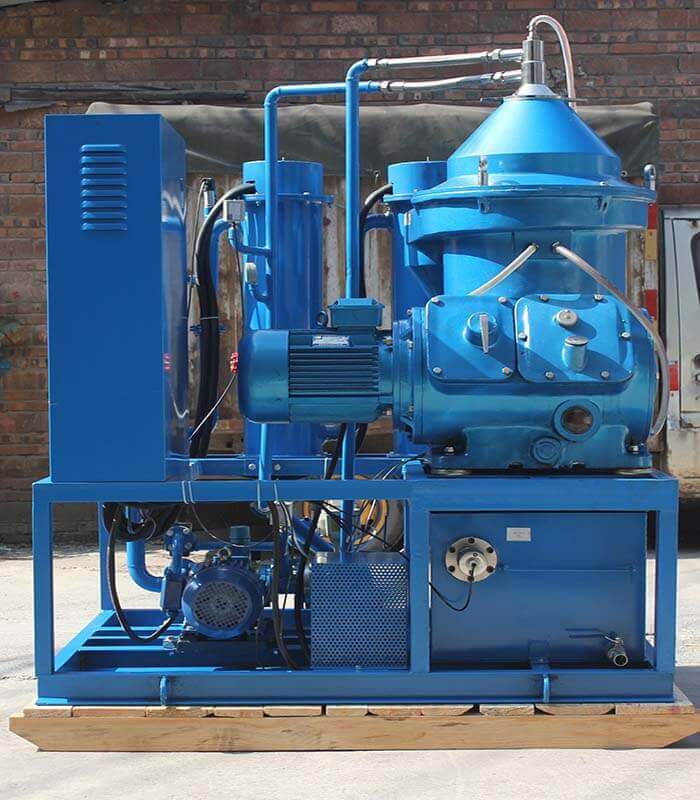E-mail seo@sino-purification.com

Time:2025-10-27 13:15:08 Reading volume:
Centrifuges are not the mainstream choice for transformer oil purification today. Modern vacuum oil purifiers are more efficient and capable of removing dissolved water and gases.
However, centrifuges still serve a purpose in cases where the oil is severely contaminated with water, sludge, or large solid impurities.

Using the density differences between oil, water, and impurities to separate them under powerful centrifugal force.
How a Transformer Oil Centrifuge Works?
Contaminated transformer oil—containing water, sludge, and particles—is pumped into the centrifuge drum. Inside, a set of separation discs spreads and accelerates the oil into rapid rotation, creating strong centrifugal force.
The drum spins thousands of times per minute, producing a force thousands of times stronger than gravity.
Different densities cause natural stratification:
Outer layer: Solid impurities (sludge, metal particles)
Middle layer: Water (free or emulsified)
Inner layer: Clean transformer oil
This process effectively removes free water and large impurities.
Each layer exists through a different outlet:
Clean oil returns to the transformer or tank.
Water drains through dedicated channels.
Solids stick to the drum wall and must be cleaned manually during maintenance stops.
Advantages of Centrifugal Separation
Handles heavily contaminated oil:
Centrifuges perform well when oil contains large amounts of water and solid particles.
No filter elements:
Operation costs are low since no filter replacement is required.
Fast pre-treatment:
Suitable for quick cleaning before deep vacuum filtration.
Limitations of Transformer Oil Centrifuges
Despite their usefulness, centrifuges are not ideal for fine or deep purification:
Cannot remove dissolved water:
They only remove free and emulsified water, not the tiny water molecules that affect transformer oil’s insulation strength.
Cannot remove dissolved gases:
Air and other gases remain in the oil, reducing dielectric performance.
Requires downtime for sludge removal:
Solid waste must be manually cleaned from the drum.
Lower filtration precision:
Fine particles that affect oil clarity and performance are often left behind.
Summary
A transformer oil centrifuge works like a super gravity separator, using high-speed rotation to separate oil, water, and solids by density. It is effective for heavily polluted oil, but limited in achieving deep dehydration and degassing.
For modern transformer maintenance, high-vacuum oil purifiers have largely replaced centrifuges, offering higher precision, continuous operation, and better protection for transformer insulation systems.